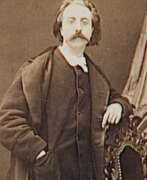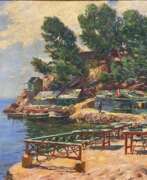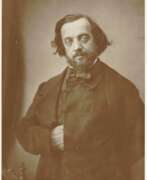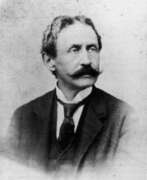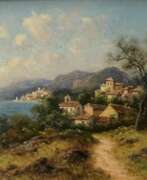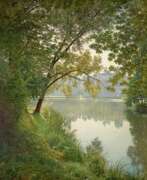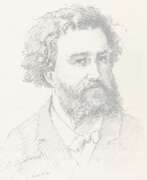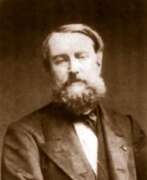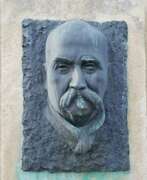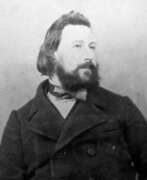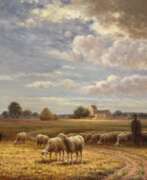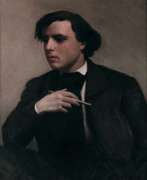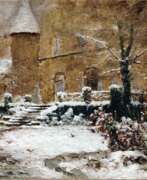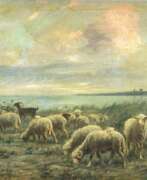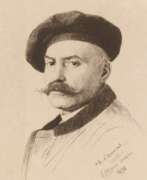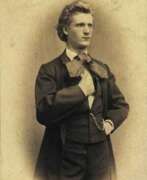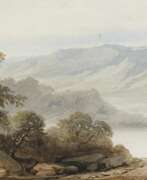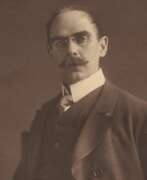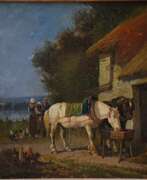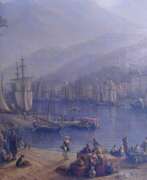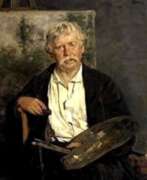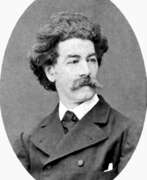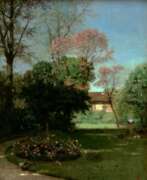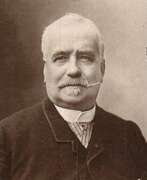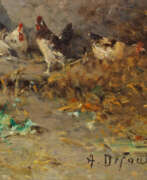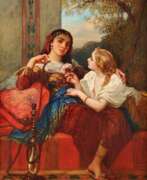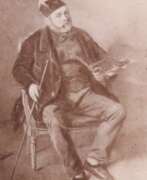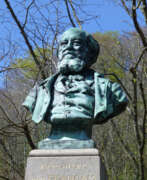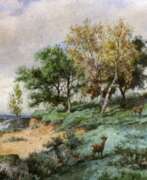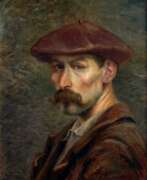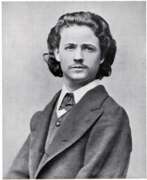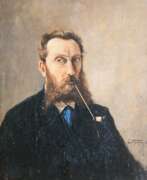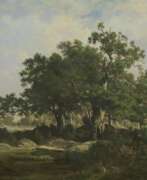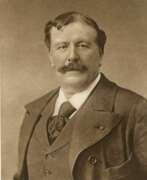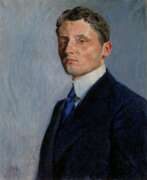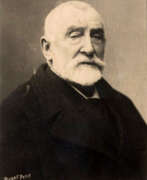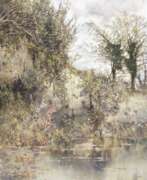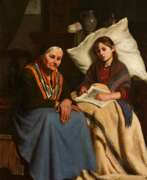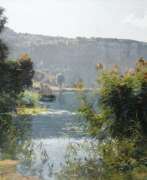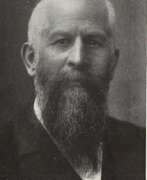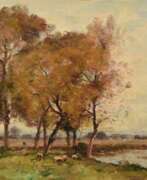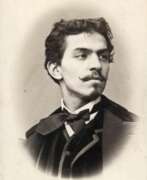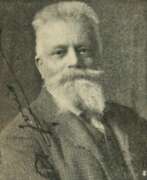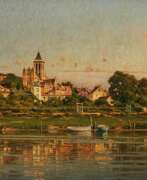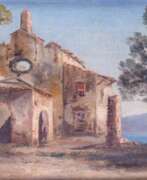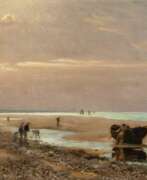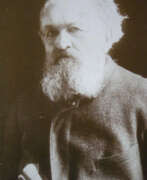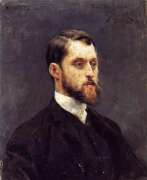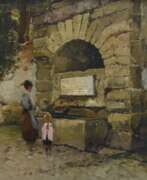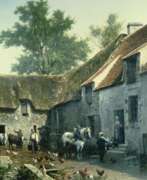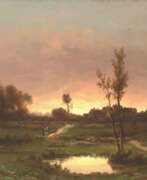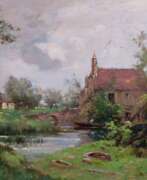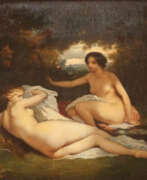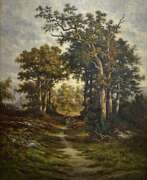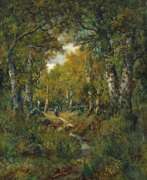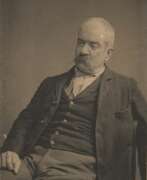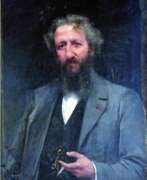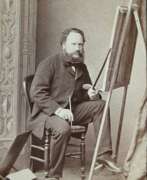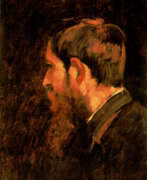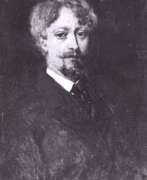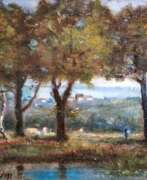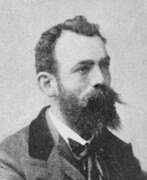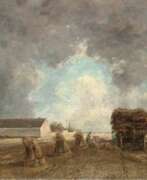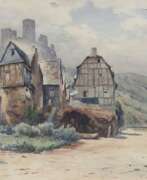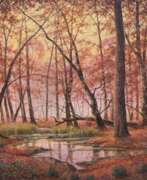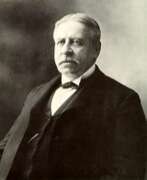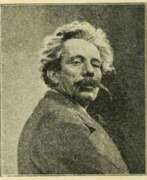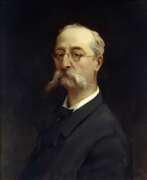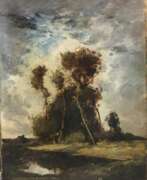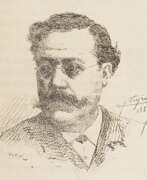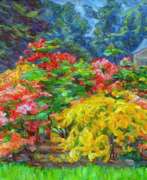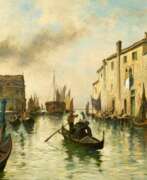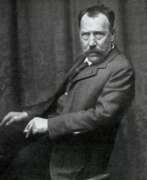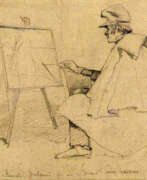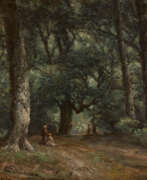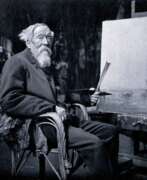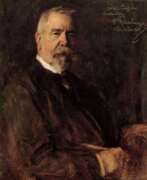Barbizon School
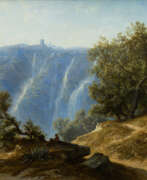

Auguste Anastasi is a French landscape painter of the Barbizon School.
Auguste Anastasi was a student of Paul Delaroche and Jean-Baptiste Corot. He painted landscapes around Paris, Normandy, Holland and Italy, in Rome and especially in Naples, but also in the Tyrol, of which he also made lithographs.
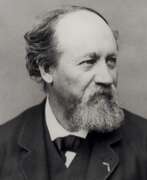

Eugène Louis Boudin was one of the first French landscape painters to paint outdoors. Boudin was a marine painter, and expert in the rendering of all that goes upon the sea and along its shores. His pastels, summary and economic, garnered the splendid eulogy of Baudelaire; and Corot called him the «King of the skies».


Charles Ferdinand Ceramano, born Charles Ferdinand Semain, was a Belgian painter and illustrator of the Barbizon school.
Ceramano's favorite subjects were pastoral landscapes and scenes of sheep in a sheepfold or in a meadow.
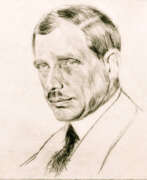

Max Clarenbach was a German painter of the first half of the twentieth century. He is known as a painter, landscape painter, genre painter and teacher and is considered one of the most important representatives of Rhenish painting of his time.
Max Clarenbach made study trips to Italy and Holland early in his career, where he formed his genre preferences and became a landscape painter. His work reflected the influence of the Hague School and the French Barbizonians. The artist skillfully depicted winter scenes and the nature of western Germany. He also painted sports and street scenes.
Clarenbach was one of the organizers of the Düsseldorf Sonderbund and taught at the Düsseldorf Academy of Art.
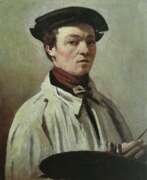

Jean-Baptiste-Camille Corot was a French landscape and portrait painter as well as a printmaker in etching. He is a pivotal figure in landscape painting and his vast output simultaneously referenced the Neo-Classical tradition and anticipated the plein-air innovations of Impressionism.
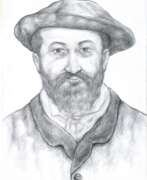

Pierre Emmanuel Eugène Damoye was French artist who was regularly recognized by a broad range of art critics as one of the most significant heirs to the Barbizon school tradition. He studied his craft at the École des Beaux-Arts and went on to become a renowned and influential landscape artist noted for his sweeping skies, tree studded-plains, and vibrant farmlands.
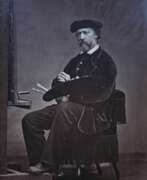

Charles-François Daubigny was a French painter, one of the members of the Barbizon school, and is considered an important precursor of impressionism.
He was also a prolific printmaker, mostly in etching but also as one of the main artists to use the cliché verre technique.
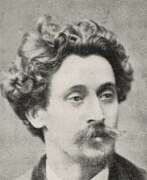

Louis Victor Antonio Artan de Saint-Martin was a Belgian marine painter. His work was influenced by the Barbizon School and the French marine painter Eugène Boudin. A convinced realist, he confined himself to the familiar North Sea, which he studied every day. He was fascinated by dramatic effects and exceptional atmospheric conditions. Just as in the paintings of the Tervuren school, his painting, created by the use of large quantities of pigment applied in copious layers or large masses skilfully distributed and then worked with a trowel, gives the work an appearance of breadth and immediacy.
Saint-Martin was one of the sixteen co-founders of the Société Libre des Beaux-Arts, an association opposed to the stylistic hegemony of the academies and salons. After 1880 he worked in a more impressionist style, and in 1881 he became a Chevalier de l'Ordre de Léopold. Two years later, the artist was awarded a gold medal at the International Colonial and Export Exhibition in Amsterdam.


Edmond De Schampheleer was a Belgian landscape painter and engraver. After completing his studies with Eugène-François de Block in Antwerp, he set himself up as a landscape painter; taking a realistic approach, derived from Théodore Fourmois and the French artists of the Barbizon School. He also combined plein aire techniques with large-scale painting in his studio. His style increasingly came to resemble that of the 17th century Dutch artists.
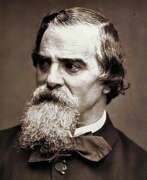

Narcisse Virgilio Díaz de la Peña was a French painter of the Barbizon school.
Díaz exhibited many pictures at the Paris Salon, and was decorated in 1851 with the rank of Chevalier (Knight) of the Légion d’honneur.


Jules Louis Dupré was a French painter, one of the chief members of the Barbizon school of landscape painters. If Corot stands for the lyric and Rousseau for the epic aspect of the poetry of nature, Dupré is the exponent of its tragic and dramatic aspects.
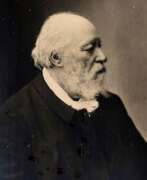

François-Louis Français, also known as Louis Français, was a French painter, lithographer and illustrator who became one of the most commercially successful landscape painters of the 19th century. A former pupil of Gigoux, he began his career by studying lithography and wood engraving, becoming a prolific illustrator and print-maker. His work as an illustrator is to be found in around forty books and numerous magazines from the late 1830s to the 1860s. Français also produced a large number of pen and ink drawings, enhanced by sepia, notable for their attention to detail and for their technical adroitness and conciseness.
Français is associated with the Barbizon School of painting, a movement to represent art in nature in a Romantic, Realist context. In 1836 whilst at Barbizon he met the landscape painter Camille Corot and began a ten-year association as a friend and acolyte. Français's paintings possess some of the prominent features of the work of Corot in his use of tonal colours, loose brushwork and an emphasis on softness of form.


Ida Gerhardi was a German artist of the late nineteenth and early twentieth centuries. She is known as a painter, representative of classical modernism.
Ida Gerhardi at the beginning of her career worked mainly in the genre of landscape, was an adherent of the Barbizon school of painting. Later she began to specialize in portraits, then switched to marine subjects, and in the last years of her life she created still lifes and genre paintings. Beginning in 1900, she was strongly influenced by the Post-Impressionists and Fauvists, and from 1911 by Rhenish Expressionism.
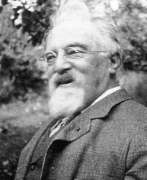

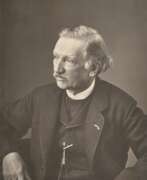

Charles-Emile Jacques was a French painter of Pastoralism and engraver who was, with Jean-François Millet, part of the Barbizon School. He first learned to engrave maps when he spent seven years in the French Army.
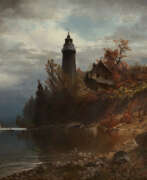

George Herbert McCord was an American painter known for his luminous landscapes and seascapes.
McCord studied at the National Academy of Design in New York and later in Paris under the guidance of the French Barbizon School. He became known for his ability to capture the changing effects of light and atmosphere in his landscapes and seascapes. He was particularly interested in the coastal areas of Long Island and the North Shore of Massachusetts, which he depicted in many of his paintings.
McCord was a member of several prominent art organizations, including the Society of American Artists and the American Watercolor Society. He exhibited regularly at the National Academy of Design, the Pennsylvania Academy of Fine Arts, and the Paris Salon.
Today, McCord's work can be found in the collections of museums such as the Metropolitan Museum of Art in New York City and the Smithsonian American Art Museum in Washington, D.C. He is considered one of the leading American landscape painters of the late 19th century and his work continues to be admired for its luminosity and skillful rendering of light and atmosphere.
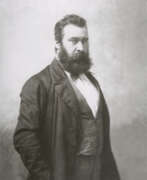

Jean-François Millet was a French artist and one of the founders of the Barbizon school in rural France. Millet is noted for his paintings of peasant farmers and can be categorized as part of the Realism art movement. Toward the end of his career, he became increasingly interested in painting pure landscapes. He is known best for his oil paintings but is also noted for his pastels, conte crayon drawings, and etchings.
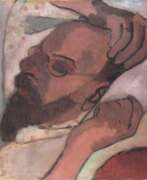

Friedrich Wilhelm Otto Modersohn was a German painter of the late 19th and first half of the 20th centuries. He is known as a landscape painter, a representative of the Barbizon School.
Otto Modersohn produced Barbizonian-style landscapes early in his career, but from about 1890 his style became more expressionist, with an emphasis on his choice of colors. The death of his second wife influenced his style: the colors became darker and the images more stark. Modersohn was one of the founders of the Worpswede artists' colony. A large collection of his works is kept in the Modersohn Museum in Fischerhude, and a street in Berlin is also named after him.
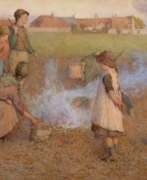

Peter Walker Nicholson was a British painter.
After being educated as a lawyer, Nicholson decided to take up painting and entered the Ruskin School in Oxford. He showed great promise and was very talented, but by tragic accident died very young.
During a year's stay in Paris in 1881, Nicholson was influenced by the work of artists of the Barbizon school, who took as subjects of paintings of everyday life of peasants in a realistic style. Nicholson painted rural landscapes and managed to create his masterpiece, the genre painting The Burning of Weeds, which is on display at the Royal Scottish Academy.
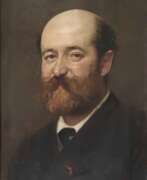

Léon Germain Pelouse was a self-taught French painter born in Pierrelaye (Val-d'Oise, France). At sixteen, he began working as a traveling salesman. He began painting when he was twenty, as he was serving in the French army as a conscript. His professional painting career began at twenty-seven, with the exhibition of his Les Environs de Précy (Near Précy) at the Salon de Paris of 1865. Despite severe criticism, he continued painting. He moved to Brittany, and there, inspired by nature around Pont-Aven and Rochefort-en-Terre, Pelouse painted landscapes which were exhibited at the Salon de Paris in the following years. He received his first medal in 1873 for Vallée de Cernay (Cernay Valley). He finally gained success and critical approval. The French government bought many of his works which are now in the holdings of museums including the Musée d'Orsay, the Musée Malraux, and the Musée des Beaux-Arts de Nantes.
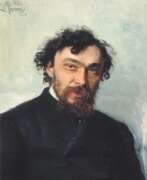

Ivan Pavlovich Pokhitonov (Russian: Иван Павлович Похитонов) was a Russian artist of the late 19th and early 20th centuries. He is known as a painter and graphic artist, a master of landscape, who lived and worked in Europe for much of his career.
Ivan Pokhitonov created mainly miniature landscapes, made with a small brush on planks of red or lemon wood, treated and primed with a special technology. He worked mostly in plein air. The most common motif of his miniature paintings during the years of emigration were city and seascapes of France. In his works, always built on a combination of the finest shades of color, the artist organically combined the techniques of Barbizon, of which he was a fan, and the traditions of the Russian landscape school. He also turned to the genre of still life and portraiture.


Václav Jan Emanuel Radimský was a Czech landscape painter. He is considered one of the most important representatives of Czech impressionism in the late 19th and early 20th centuries. He studied painting at the academies of fine arts in Munich and Vienna.
Václav Radimský came to France in the early 1890s to study at the Barbizon School. In Giverny he joined a group of painters that also included Claude Monet and Camille Pissarro, who had an indelible influence on his painting style.
Václav Radimský is considered to be one of the first Czech painters to achieve artistic and commercial success in France and to gain great recognition in French society.
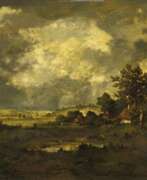

Léon Richet was a French landscape painter. He was born in Solesmes, Nord. He studied art in Valenciennes and became a high school teacher there in 1879. He became associated with the Barbizon school and did several paintings with Narcisse Virgilio Díaz.


Martín Rico y Ortega was a Spanish painter of landscapes and cityscapes.
Rico was one of the most important artists of the second half of the nineteenth century in his native country, and enjoyed wide international recognition as well, especially in France and the United States. From his earliest works painted in the mountainous countryside outside of Madrid to the later works he painted in Paris and Venice, throughout his life Rico stayed true to his love of painting en plein air, despite his evolving artistic style.
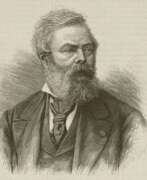

Willem Roelofs was a Dutch painter, water-colourist, etcher, lithographer and draughtsman. Roelofs was one of the forerunners of the Dutch Revival art, after the Romantic Classicism of the beginning of the 19th century, which led to the formation of The Hague school. His landscapes, especially the early ones with their dominating cloudy skies, demure bodies of water and populated with cattle, are typical for the School of Barbizon.
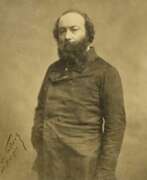

Théodore Rousseau was a prominent French painter, celebrated for his pioneering contributions to the Barbizon school of landscape art. His dedication to capturing nature's essence made him a pivotal figure in landscape painting's evolution. Rousseau's technique involved painting directly from nature, a method that infused his works with a profound sense of realism and vitality. This approach was notably evident in his masterpiece "An Avenue of Trees, Forest of l'Isle-Adam," where he meticulously captured a scene entirely outdoors, a testament to his commitment to authenticity and detail.
Théodore Rousseau's artistry wasn't confined to painting alone; his drawings, like the detailed "Study of an Oak Tree," demonstrate his versatility and deep connection with nature. His works received significant recognition, culminating in a triumphant display at the Universal Exposition of 1855. However, his life was not devoid of challenges. Personal tragedies and professional setbacks marked his later years, yet his resolve and dedication to art remained unshaken.
For art enthusiasts and collectors, Théodore Rousseau's works are pivotal, not just for their beauty but also for their role in the history of landscape painting. His pieces like "The Great Oaks of Old Bas-Bréau" are cherished in collections worldwide, serving as enduring symbols of his talent and his profound influence on subsequent art movements.
For those interested in the intersection of nature and art, subscribing to updates on Théodore Rousseau can provide invaluable insights into his life's work, his contributions to the Barbizon school, and his lasting impact on the world of art. Stay informed about new discoveries, sales, and auction events related to Rousseau's oeuvre to deepen your appreciation and understanding of this illustrious artist's legacy.
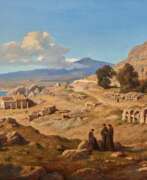

Pierre Thuillier was a French landscape painter.
Pierre traveled extensively, touring Italy, Germany, Switzerland and Algeria, and was in the Maghreb before returning to paint in France. He painted many magnificent landscapes as well as scenes from the Orient. Pierre Thullier belonged to the Barbizon school, which departed from classical romanticism, and brought his realistic scenes into the French tradition.
From 1831 he exhibited for many years at the Paris Salon, and was repeatedly honored. In 1843 he was made Chevalier of the Legion of Honor.
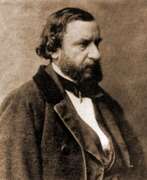

Constant Troyon was a French painter of the Barbizon school. In the early part of his career he painted mostly landscapes. It was only comparatively late in life that Troyon found his métier as a painter of animals, and achieved international recognition.
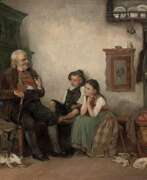

Georg Johann Christian Urlaub or Egor Fedorovich Urlaub ((Russian: Егор Фёдорович Урлауб) was a Russian and German historical painter of Bavarian origin, academician of the Imperial Academy of Arts.
Georg was born into the family of the painter and enamelist Theodor Urlaub (1814-1888), a German native and Russian citizen who worked in St. Petersburg. He studied first at the Russian Academy of Arts, then in Berlin and Munich. After returning to Russia in 1880, Urlaub was appointed a member (academician) of the Imperial Academy of Arts in St. Petersburg. After some time he went to Paris and then settled in Munich.
Urlaub had a special love for historical themes and subjects, he also created portraits, genre and landscape paintings. He painted predominantly in an impressionistic and realistic style. Urlaub also illustrated various novels by Walter Scott.
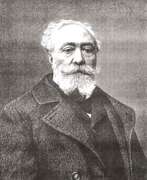

Émile van Marcke, born Charles Émile van Marcke de Lummen was a French cattle painter.
He studied under Troyon at Barbizon. He received the cross of the Legion of Honor in 1872 and a gold medal at the Paris exhibition. He is represented at the Louvre and other museums of France, and at the Metropolitan Museum in New York, The John and Mable Ringling Museum of Art in Sarasota, Florida, and in other public and private collections in the United States.


Theodoor Verstraete, also spelled Theodor Verstraete and Théodore Verstraete was a Belgian Realist painter and printmaker who is known for his landscapes depicting life in the countryside as well as his paintings of the Belgian coastal landscape. He has been called the 'poet of rural life' who depicted the humble life of the people in the countryside with empathy. Theodoor Verstraete painted landscapes with figures, village scenes and animal scenes. He initially employed a dull palette but gradually started using brighter tones. Verstraete worked in oils as well as in watercolors and also produced many etchings. His work was influenced by the realism of Jean-François Millet as well as other members of the French Barbizon school.
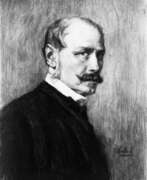

August von Pettenkofen, born August Xaver Carl von Pettenkofen, was an Austrian painter, illustrator and caricaturist.
He studied painting at the Vienna Academy of Fine Arts and painted genre works in the Biedermeier style. During the revolution of 1848 Pettenkofen became a war artist and for a long time created watercolors and lithographs depicting Austrian military uniforms. And later in Paris he was drawn to the Barbizon school. The artist's paintings from that period are filled with sincerity and empathy towards the peasants depicted.
